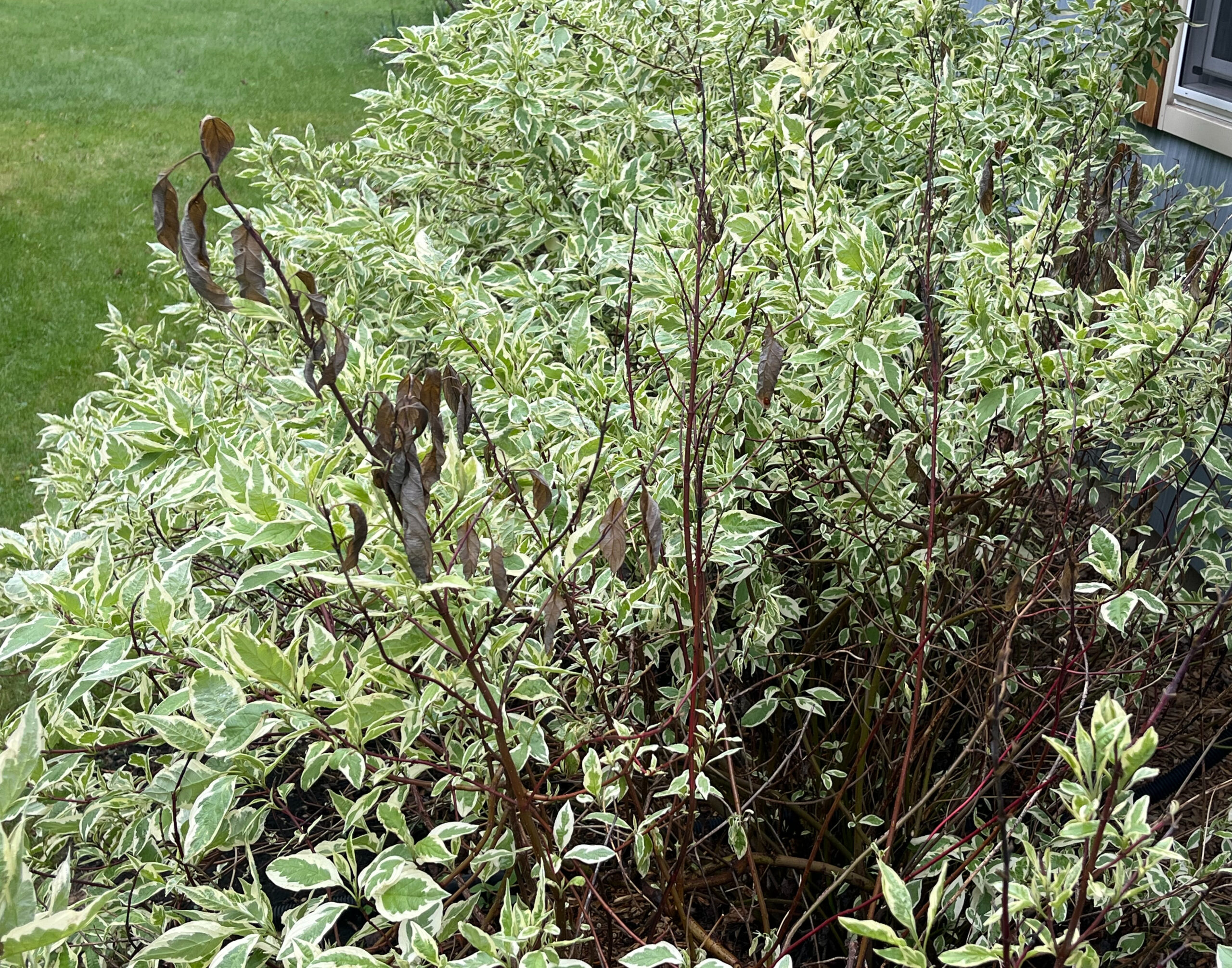Talking Plants
Jillian Patrie | University of Minnesota Yard and Garden Extension
Trees, shrubs and perennials should all be actively growing with the recent warm weather, but many in the area are noticing an increased number of plants that did not survive the winter. Let’s talk about a few reasons why plants experience winter kill and what steps gardeners can take to prevent this issue in the future.
Zone hardiness is the lowest winter temperature range that a plant can survive. The FM area is a zone 4a (average low temperatures between -25 to -30℉). The duration of sub-zero temperatures can impact even the most cold hardy plants and the damage is sometimes demonstrated as tip dieback. When snow is present, dieback can be localized to anything above the snow line. Dieback is most prevalent when temperatures are extremely low for several consecutive days. To find plant hardiness zones visit https://planthardiness.ars.usda.gov/.
Snow cover is an important factor that can heavily influence winter survival, especially for herbaceous perennials. Snow is a great insulator and adds and keeps moisture in the soil. Without snow cover, plant roots can dry out from winter winds and sun. Evergreens lose moisture from their needles during the winter and winters without snow cover and adequate soil moisture can be particularly harsh on these types of trees and shrubs.
Soil moisture is another important factor that influences the severity of winter kill for landscape plants. If plants enter the winter season in a state of drought, roots can dry out. Overwintering and growing perennials, trees or shrubs in raised beds or containers can be tricky due to soil moisture and the insulating properties of snow cover and the ground itself. If you plan to overwinter perennial plants in containers or raised beds, placing them in a protected area or allowing snow to cover them is helpful.
We can mitigate winter kill by selecting cold hardy plants (zones 2, 3 or 4). Capturing snow by waiting until spring to cut back perennials. Keeping trees, shrubs and perennials well-watered in times of drought and until the ground freezes for the winter. Reducing plant stress overall will help keep trees, shrubs and perennials happy all year long. For more information on protecting plants for best overwintering success please visit https://extension.umn.edu/planting-and-growing-guides/protecting-trees-and-shrubs-winter.
Protecting plants from animal damage is also important to ensure plants return the following year. Fencing or tree trunk protection to keep deer and rabbits out is necessary on many ornamental landscape trees and shrubs.
We should also remember that plants are living things and sometimes no matter how well we care for them, there is a possibility that they will not survive the winter.
For questions about this article or local assistance please contact Clay County Extension Educator, Jill Patrie at 218-299-7338 or by email at patri350@umn.edu.


